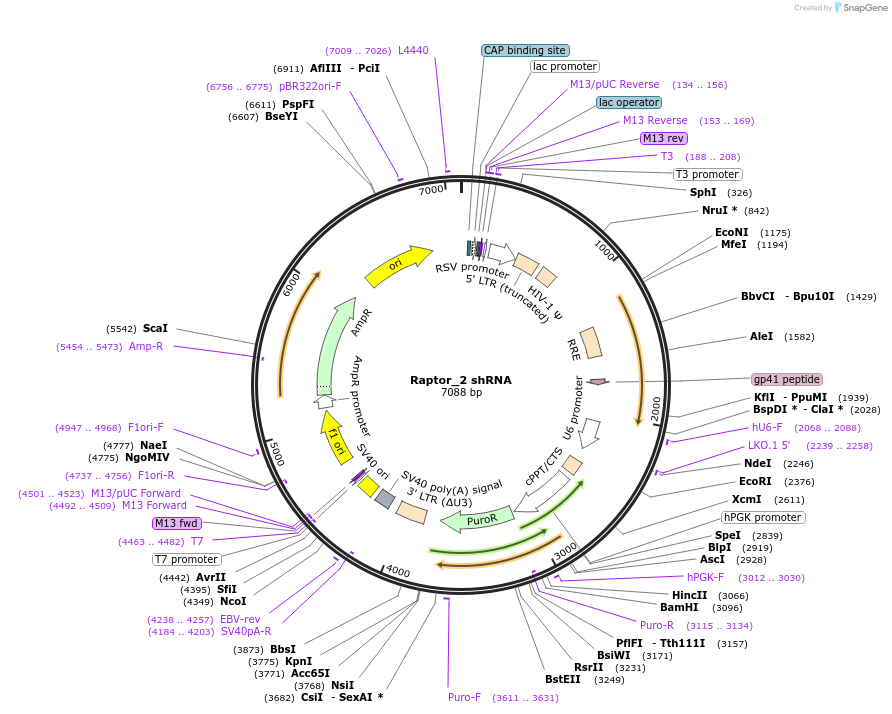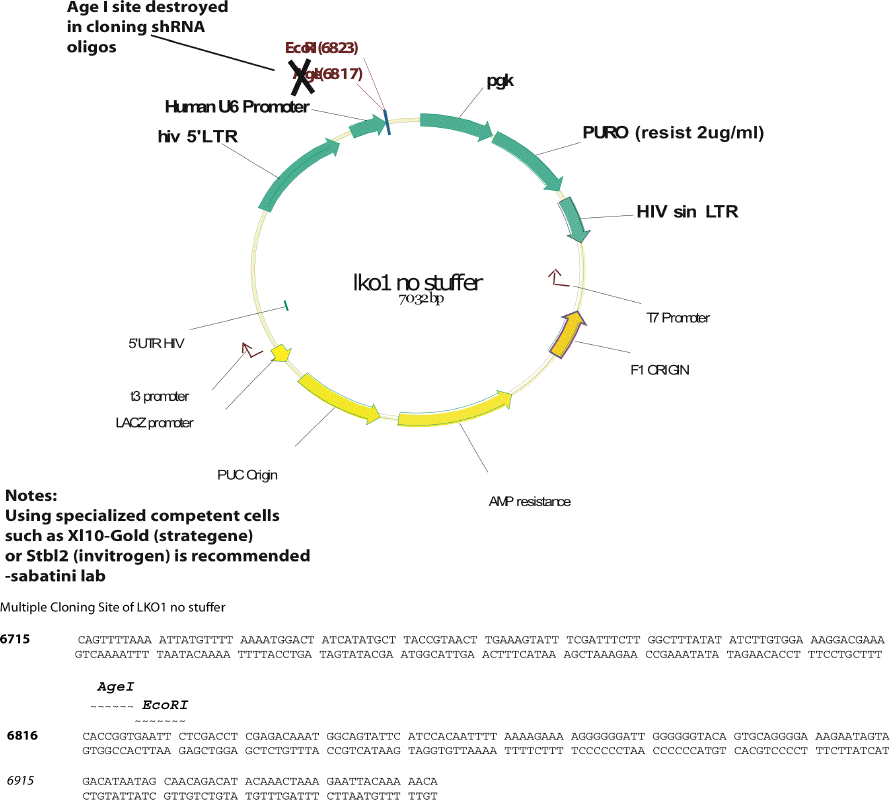-
Depositing Lab
-
Publication
-
Sequence Information
Ordering
| Item | Catalog # | Description | Quantity | Price (USD) | |
|---|---|---|---|---|---|
| Plasmid | 1858 | Standard format: Plasmid sent in bacteria as agar stab | 1 | $89 | |
Backbone
-
Vector backbonepLKO.1
-
Backbone manufacturerStewart SA, RNA 2003 Apr; 9(4):493-501.
- Backbone size w/o insert (bp) 7032
-
Vector typeMammalian Expression, Lentiviral, RNAi
-
Selectable markersPuromycin
Growth in Bacteria
-
Bacterial Resistance(s)Ampicillin, 100 μg/mL
-
Growth Temperature37°C
-
Growth Strain(s)Unknown
-
Growth instructionsXL10-Gold Ultracompetent Cells from Stratagene. 37oC.
-
Copy numberUnknown
Gene/Insert
-
Gene/Insert nameRaptor
-
Alt name275 Raptor_2
-
Alt nameshRNA Raptor
-
SpeciesH. sapiens (human)
-
Insert Size (bp)60
-
Entrez GeneRPTOR (a.k.a. KOG1, Mip1)
Cloning Information
- Cloning method Restriction Enzyme
- 5′ cloning site AgeI (destroyed during cloning)
- 3′ cloning site EcoRI (not destroyed)
- 5′ sequencing primer LKO.1 5'
- (Common Sequencing Primers)
Resource Information
-
Reference
-
Articles Citing this Plasmid
Terms and Licenses
-
Academic/Nonprofit Terms
-
Industry Terms
- Not Available to Industry
Trademarks:
- Zeocin® is an InvivoGen trademark.
Depositor Comments
This plasmid is referred to as Raptor shRNA_1 in the science article. Sense: 5
These plasmids were created by your colleagues. Please acknowledge the Principal Investigator, cite the article in which the plasmids were described, and include Addgene in the Materials and Methods of your future publications.
-
For your Materials & Methods section:
Raptor_2 shRNA was a gift from David Sabatini (Addgene plasmid # 1858 ; http://n2t.net/addgene:1858 ; RRID:Addgene_1858) -
For your References section:
Phosphorylation and regulation of Akt/PKB by the rictor-mTOR complex. Sarbassov DD, Guertin DA, Ali SM, Sabatini DM. Science 2005 Feb 18;307(5712):1098-101. 10.1126/science.1106148 PubMed 15718470











